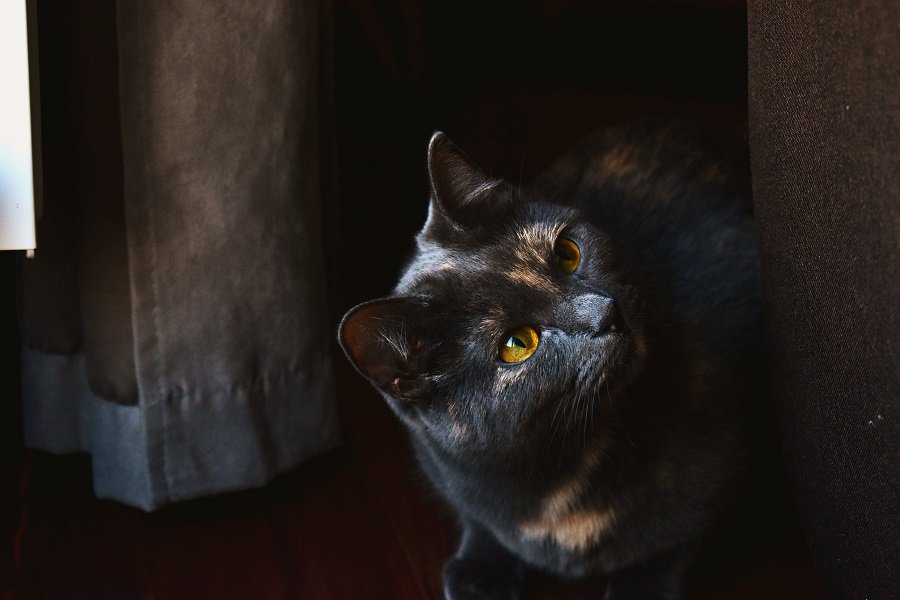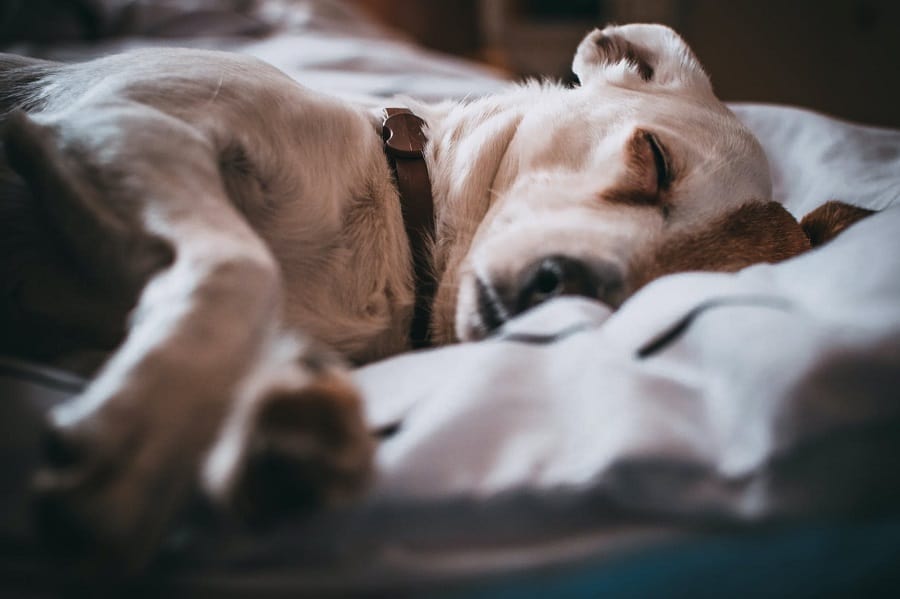When you have a pet, dealing with parasite infestation, such as fleas, is a challenge you must be ready for. These insects are everywhere in the outdoors, and every time you go out for a walk or a day out with your dog, there is the possibility it will catch some fleas. But how can one deal with this problem?
Many pet owners consider purchasing flea collar vs drops. However, flea collars proved to be a more reliable solution, and in this article, I plan to use my experience as an entomologist to discuss flea collars.
It is a stress-free method of preventing and killing fleas. In this discussion, I will focus on answering how such items work and how to choose the right flea collar.
Flea Collar Buyer’s Guide

The effectiveness of flea collars is an issue that elicits mixed opinions from users. Some can attest to how effective their items worked while others have nothing positive to say about them.
The difference in experiences could simply be caused by the factors each of the parties considered when buying a flea collar.
How Does a Flea Collar Work?
Previously, flea collars could irritate the pet’s skin because of the harsh chemicals they contained. However, now it’s a thing of the past. The manufacturers of these collars took measures to modernize the models to minimize their negative impact on animals and humans alike. So, how do flea collars work?
The working model of such an item is mainly based on the type of collar you buy. In general, there are three basic types. They include:
Repelling collars
Repelling models release a gas that is poisonous to the fleas. Therefore, when wearing the collar, a dog will be protected from fleas that will not want to come into contact with it. Moreover, repelling products are also effective in killing the insects that have already got into the dog’s fur.
The gas the collar releases is enough to suffocate and kill these pests. However, its killing abilities are limited to the areas near where the collar is worn.
What I love about repelling collars is the fact that the gas it generates doesn’t stay in the fur. Therefore, no need to worry about being close to your pet when it is wearing the collar.
The only con, this type of collar lasts for a couple of months only. After this time, you will need to remove it and tie another one.
Related Post: 7 Best Dog Flea Collars Reviewed

Absorption-based collars
This type of collar is pretty common among pet owners. It works by killing the fleas on your dog, thanks to being soaked in a chemical solution. What you need to know is that it contains insecticides that will be sucked up in the dog’s body.
Once in the body, the product spreads evenly in the blood, killing and preventing further flea infestation on your dog effectively. While these collars are the most effective products, they can be harmful to both you and your dog.
Therefore, make sure to choose the item with a suitable dose for your pet. Also, don’t touch your dog for a day until the insecticide is soaked in its body.
Related Post: 7 Best Flea Collars for Cats Reviewed
High-frequency collars
High-frequency models represent the advanced form of flea collars. They work by releasing ultrasonic waves that are effective in repelling fleas from your dog. While the previous types contain chemicals or poisonous gas, such collars are not harmful to humans and animals at all.
Therefore, you won’t be allergic to such an item, and the dog should be comfortable wearing it. However, they work more as a preventive option and won’t help with a flea infestation.
Flea Collar Effectiveness

How effective are flea collars? Generally, they are quite reliable when used correctly, meaning that you have to adhere to the instructions given on their usage.
For example, when the guidelines say, do not expose a collar to water, follow this precaution. It means that the given collars are not water-resistant and will not be effective once they are wet.
Also, with time, fleas may develop resistance to chemicals used in making a specific collar. Therefore, I recommend changing protective models once in six months.
Flea Collar Variations
Besides the classification provided above, flea collars can be divided into natural or chemical-based. A natural collar is one that has been made using naturally-sourced ingredients. It mainly relies on raw materials you can receive from nature, for instance, oils and herbs. However, such items are not as powerful as chemical-based ones.
Chemical (repelling, absorption-based) collars are made using ingredients that are synthetically produced. Such collars may have some adverse side effects because the chemicals used may not be entirely safe for dogs or humans. However, according to the Environmental Protection Agency (EPA), manufacturers have agreed to end the sale of pet collars that have pesticides for the sake of children and pet protection, so you don’t have to worry about it.
Main Ingredients Used in Making Flea Collars
As I have mentioned above, chemical flea collars contain insecticides, that is, a mix of chemicals. Some of the chemical used include:
- Deltamethrin. It is classified among the insecticides that are safe for animals and human beings. It is a synthetic form of natural Pyrethrin.
- Propoxur. It works by poisoning the nervous system of fleas. The main downside to this ingredient is that significant exposures can be harmful to human beings. Therefore, avoid much contact with collars made using this chemical.
- Amitraz. It is a common ingredient in collars made for preventing flea infestation. That is because it is primarily considered effective in controlling parasites.
- Pyriproxifen. It is another ingredient used mainly in making insecticides for preventing parasites. It works effectively by targeting the eggs and larvae of fleas, sterilizes them, and controls their breeding.
Possible Side Effects
One thing you have to understand is that insecticides are meant to be poisonous to their targets. Therefore, in the process of performing their role, they may end up harming you and your pet, too, if not used carefully.
According to a study by Natural Resources Defense Council (NRDC), the following are some of the side effects that toxic chemicals on flea collars can have on humans and animals:
- Damage to the nervous system, especially those with Tetrachlorvinphos (TCVP) as an ingredient;
- Gastrointestinal complication on pets;
- Irritation of the skin the collar is attached;
- Chemical burns on pets.
Therefore, make sure to check for the precautions provided by the manufacturer. Alternatively, you can consult your vet to select the right option for taking care of your pet and preventing fleas. It is always better to think of the protection beforehand that struggle with fleas attacking your pet.
FAQ on How Do Flea and Tick Collars Work

Based on the mixed consumer reactions that these items elicit, users have many questions on their functionality and effectiveness. Here are answers to some of these questions.
How long does it take for a flea collar to work?
The period it takes for the product to start working depends on its type. Natural collars take longer than their chemical counterparts to begin working. In most cases, chemical collars may take as little as one day to start being emitted. Based on this timeline, their impact may be felt within three to four weeks.
How long do flea collars last?
A well-maintained collar should last for five to eight months. As a precaution, avoid exposing the collar to water. This way, you will allow the items to serve as per the manufacturer’s instructions. However, if you purchase a water-resistant model, there’s nothing to worry about.
How much is a flea collar for dogs?
The prices of flea collars vary, depending on the brand and type. Chemical models tend to cost higher but serve for longer than natural ones. However, the price doesn’t always reflect the quality, so be sure to check the ingredients and feedback on the web.
When can I put a flea collar on my puppy/kitten?
Flea collars can be harmful to puppies and kittens. Therefore, it is recommended that for puppies, one should not use such an item until the pet reaches the age of eight weeks. Kittens must reach fourteen weeks before they are introduced to a pet collar.
Also read:
- Capstar for Dogs Review
- Seresto Flea Collar Review
- Advantage II for Cats Review
- K9 Advantix Review
- What Do Fleas Look Like
- Bugs That Look Like Fleas
- How Much Does Flea Extermination Cost
Getting High-Quality Flea Collars for Dogs
Getting rid of fleas and preventing them on your pet is an important care practice. While pets play outside, they can catch fleas, and it would be better to take preventive measures than dealing with flea infestation.
Using flea collars is one of the most effective preventive strategies. The advantage of this technique is that it can be used in conjunction with other preventive and treatment insecticides. On the bright side, I have discussed some of the concerns you may have, including the pressing one, do flea collars really work? Yes, they work, but one should choose the right model carefully.
Based on your experience, what is the best type of flea collar to obtain? Which type do you consider most effective? Have you ever dealt with fleas on your dog or cat? If yes, did a flea collar help you? Share your thoughts in the comments, and I’ll be happy to read and answer them.
References:
- Companies Agree to Stop Selling Pet Collars Containing Pesticide to Protect Children (U.S. Environmental Protection Agency):
https://www.epa.gov/safepestcontrol/companies-agree-stop-selling-pet-collars-containing-pesticide-protect-children - Poison on Pets II (Miriam Rotkin-Ellman, MPH; Gina Solomon, MD, MPH):
https://www.nrdc.org/sites/default/files/poisonsonpets.pdf

